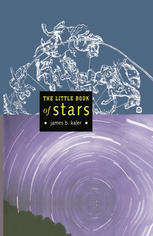

Most ebook files are in PDF format, so you can easily read them using various software such as Foxit Reader or directly on the Google Chrome browser.
Some ebook files are released by publishers in other formats such as .awz, .mobi, .epub, .fb2, etc. You may need to install specific software to read these formats on mobile/PC, such as Calibre.
Please read the tutorial at this link: https://ebookbell.com/faq
We offer FREE conversion to the popular formats you request; however, this may take some time. Therefore, right after payment, please email us, and we will try to provide the service as quickly as possible.
For some exceptional file formats or broken links (if any), please refrain from opening any disputes. Instead, email us first, and we will try to assist within a maximum of 6 hours.
EbookBell Team

4.4
82 reviewsThe Little Book of Stars tells the story of stellar science and what the stars mean to us from a variety of perspectives. Beginning with the "big picture;' the book moves through progressively more and more intimate views until we feel we can hold the stars in our hands, from which we can then throw them back to the sky to see our place among them. The book opens with a summary of the event that created our Universe, the Big Bang, and then goes on to describe the natures of the Big Bang's progeny, the stars-what they are, how they shine, and how they can live such immensely long lives. Approaching horne, it next examines the measures of the stars: where they are, how they are collected together from pairs to galaxies of billions, and how we learn of their individual properties. Yet closer, we look in depth at the Sun and at the physical differences among the stars, at the immense range of properties they possess. Finally, arriving at Earth, we see the signif icance of the stars to human life, how we have used them to tell our stories and to find where we are in both space and time. v From this base, the book looks more closely at stellar details, concentrating on temporal phenomena-on stellar change-and on the observational base that helps set the stage for the theory that links them all together.